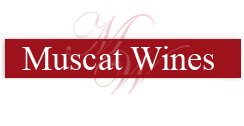MUSCAT WINES OF SOUTH AFRICA
(In the 2010 Muscats du Monde International Wine Festival a South African muscat headed the list of the Top 10 Best Muscats for 2010:
• Nederburg Private Bin Eminence 2007 (Distel-Nederburg Wines)
Muscat Blanc a Petits Grains is called Muscadel or Muskadel in South Africa. It is grown primarily for the production of sweet dessert wines which may be fortified.
One of the world’s most famous dessert wines was produced in South Africa, in the district of Constantia, south of Cape Town. In 1685 Groot Constantia was established in the area by the governor of the Cape of Good Hope. In 1712 the estate was broken up into three parts and the parcel purchased by the Cloete family became famous for production of the wine called “Constantia”. The wine was brought to world prominence in the late 1770s. It was an unfortified sweet wine made from red and white Muscadel, Pontac and Chenin Blanc grapes. Napoleon ordered it when he was on St. Helena and it became the favorite of European nobility. By the 1860s the vineyard succumbed to phylloxera and powdery mildew and no wine was produced after the 1880s.. The vineyards were revived in the 1980s. “Vin De Constance” is now produced by Klein Constantia and Groot Constantia makes “Grand Constance”. Both of these wines are made from Muscat Blanc a Petits Grains and are in the style of the original wine.
Muscat of Alexandria , called Hanepoot, forms a high percentage of South Africa’s grape harvest. Hanepoot was one of the first cultivars brought to the Cape by European immigrants.. It is a versatile grape, used as a table grape, and in the production of raisins and grape juice. As a wine grape, it is best known for the production of sweet fortified wines, sometimes of the Jerepigo style (alcohol is added before fermentation to very ripe grape juice). Some vintners use it in semi-sweet blends and a little is used to make a varietal brandy.
A little Muscat Ottonel is also grown in South Africa. It is used to make sweet and semi-sweet wines.
